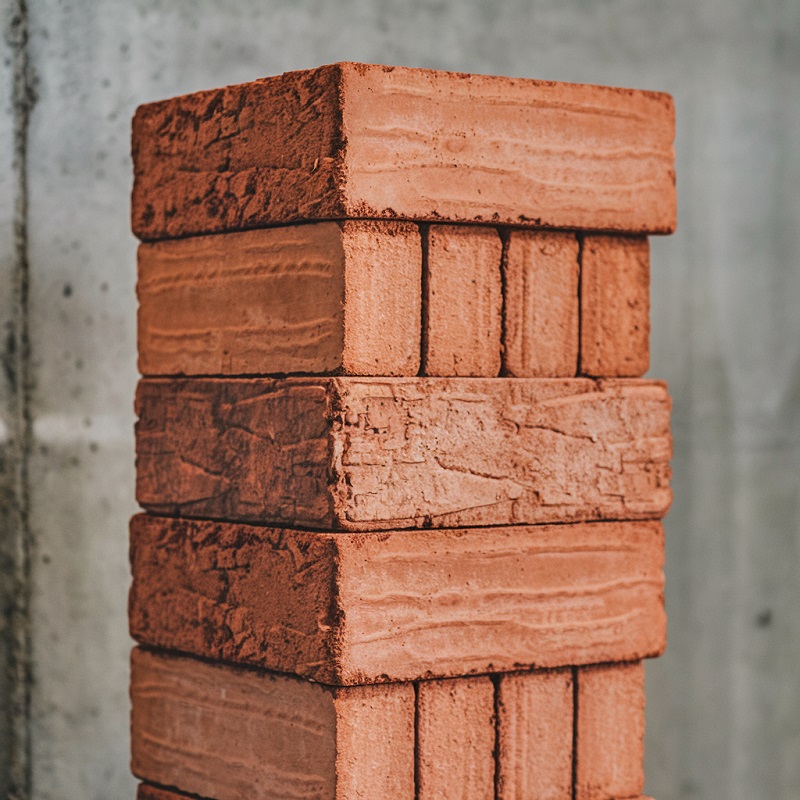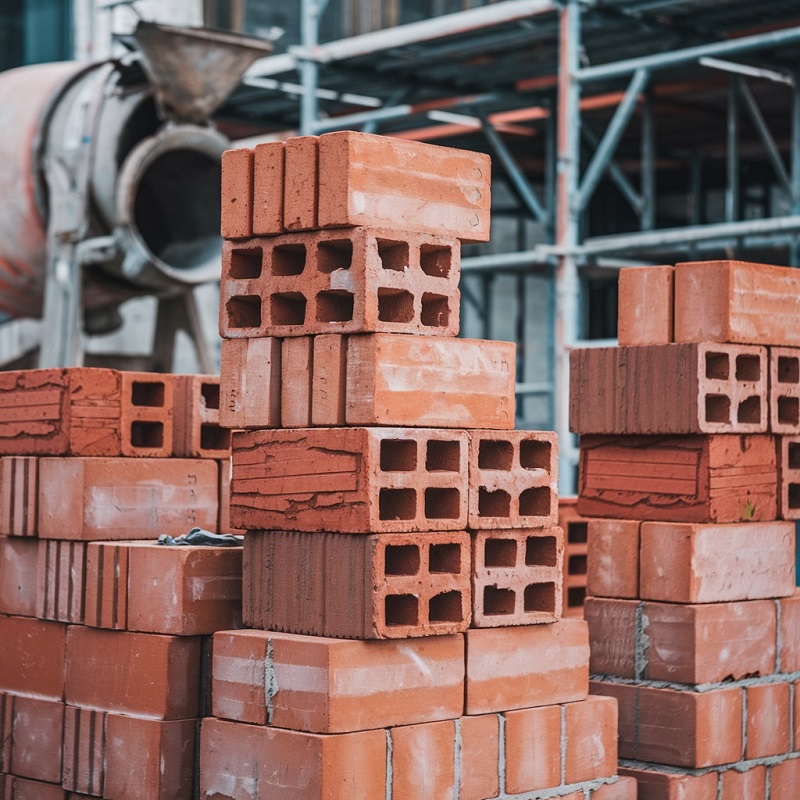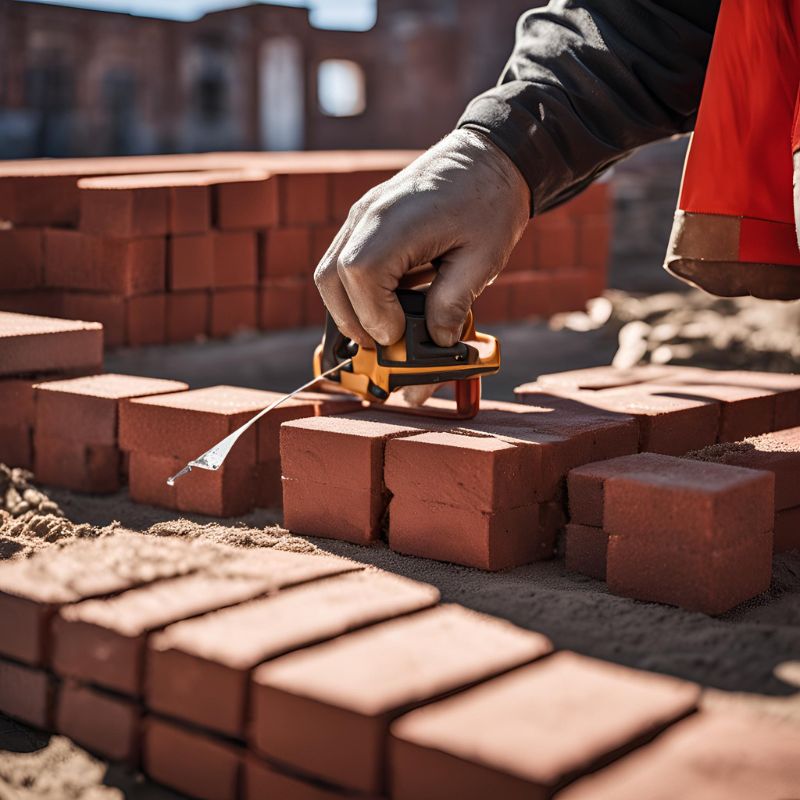Bricks, one of the world’s oldest and most reliable building materials, hold a significant role in construction projects. Understanding brick dimensions is not just a matter of knowledge, but a crucial aspect when planning and executing projects, be it a home, a wall, or a garden feature. The knowledge of standard brick sizes is the key to ensuring a perfect fit in your construction.
In this article, we’ll explore the most common brick dimensions and different brick sizes used worldwide. Understanding these measurements is universally important for your project, no matter where you are located.
Ever wondered why bricks come in different sizes?
Let’s delve into the fascinating world of brick dimensions.
Brick dimensions refer to a brick’s length, width, and height. These measurements are important because they determine how many bricks you’ll need for a project, how they will fit together, and how much mortar will be required between each brick. The standard brick size varies slightly by country, but there are common dimensions that are widely used.
Why Are Brick Dimensions Important?
Understanding the dimensions of bricks is important for several reasons:
- Planning Your Project: Accurate brick dimensions help you plan how many bricks you need.
- Cost Estimation: Knowing the size of the bricks lets you estimate the amount of material and labor needed.
- Ensuring Fit: Consistent dimensions help bricks fit together properly, making construction easier and stronger.
Standard Brick Dimensions
The most common brick dimensions depend on where you are located. Let’s take a look at the standard sizes in various regions.
Standard Brick Dimensions in the United States
In the U.S., the standard brick size is 8 inches long, 3 5/8 inches wide, and 2 1/4 inches high. When you include the mortar joint, the size is 8 x 4 x 2 2/3 inches. This size is often called the “modular brick” because it is easy to calculate in construction projects.
Standard Brick Dimensions in the United Kingdom
In the U.K., bricks tend to be a little different. The standard brick size is 215 mm long, 102.5 mm wide, and 65 mm high. This translates to approximately 8.5 x 4 x 2.5 inches. These bricks are slightly larger than the U.S. standard.
Brick Dimensions in Australia
Australia also has its brick size standard, which is 230 mm long, 110 mm wide, and 76 mm high. When converted, that’s roughly 9 x 4.3 x 3 inches.
Standard Brick Dimensions in India
In India, the standard size of a brick is 190 mm long, 90 mm wide, and 90 mm high. When you include the mortar joint, the size becomes 200 mm x 100 mm x 100 mm. This brick size is used in most construction projects across the country, making it a very common size in Indian architecture.
Standard Brick Dimensions in China
In China, bricks are typically larger compared to other countries. The standard brick size in China is 240 mm long, 115 mm wide, and 53 mm high. When adding mortar, the total size is approximately 250 mm x 120 mm x 60 mm. This size is often referred to as the Chinese modular brick and is widely used in building construction.
Why Are Brick Sizes Different?
You might be wondering why brick dimensions differ across countries. The reason concerns different architectural traditions, materials, and building codes. The slight differences in dimensions won’t usually affect the structural integrity of a project, but they do change how many bricks are needed for a wall of a certain size.
Brick Sizes and Mortar
When considering brick dimensions, it’s also important to consider the mortar between them. Mortar is the material that binds the bricks together, and its thickness will affect the overall size of the structure. For example, in the U.S., a typical mortar joint is about 3/8 of an inch thick, which needs to be added to the brick’s dimensions when planning.
Here’s a comparison table showing the number of bricks required to build a 100 square feet wall for Standard, Modular, and Roman bricks:
| Brick Type | Dimensions (Length x Width x Height) | Bricks per Square Foot | Bricks Required for 100 sq. ft. Wall |
|---|---|---|---|
| Standard Brick | 7.5 x 3.5 x 3.5 inches (India) | 6.86 | 686 |
| Standard Brick | 8.5 x 4 x 2.5 inches (UK) | 5.5 | 550 |
| Modular Brick | 7 5/8 x 3 5/8 x 2 1/4 inches (U.S.) | 6.9 | 690 |
| Roman Brick | 11 1/2 x 1 5/8 x 3 1/2 inches | 4.9 | 490 |
Explanation of the Table:
- Bricks per Square Foot: This value represents how many bricks are needed to cover one square foot of wall area, taking into account standard mortar joints.
- Bricks Required for 100 sq. ft. Wall: This column shows how many bricks you would need to construct a 100 square feet wall based on the brick type.
Common Brick Types and Their Dimensions
Here’s a comparison table showing different brick types and their corresponding dimensions in various regions:
| Brick Type | Dimensions (Length x Width x Height) | Region | Description |
| Modular Brick | 8 x 3 5/8 x 2 1/4 inches | United States | The most common brick size in the U.S., designed to be modular for easier construction. |
| Standard Brick | 215 x 102.5 x 65 mm (8.5 x 4 x 2.5 in) | United Kingdom | Standard brick size used in most UK construction projects. |
| Standard Brick | 230 x 110 x 76 mm (9 x 4.3 x 3 in) | Australia | Commonly used in Australian construction, slightly larger than the U.S. and UK bricks. |
| Standard Brick | 190 x 90 x 90 mm (7.5 x 3.5 x 3.5 in) | India | Standard Indian brick size, used in a wide range of projects, with a larger size when mortared. |
| Standard Brick | 240 x 115 x 53 mm (9.4 x 4.5 x 2.1 in) | China | The typical size used in China, larger and flatter compared to other regions. |
| King Size Brick | 9 5/8 x 2 5/8 x 2 3/4 inches | United States | Larger brick used in the U.S. to cover more area with fewer bricks, reducing costs. |
| Roman Brick | 11 1/2 x 1 5/8 x 3 1/2 inches | Various Regions | Longer, flatter brick used to create a sleek and modern look, often used for decorative projects. |
| Engineer Brick | 215 x 102.5 x 65 mm (8.5 x 4 x 2.5 in) | United Kingdom and Australia | Stronger, more durable brick, often used in foundations and load-bearing walls. |
| Jumbo Brick | 9 5/8 x 2 7/8 x 3 1/8 inches | United States | Larger and thicker than King Size, used to build more surface area with fewer bricks. |
Key findings:
- Modular bricks are widely used in the U.S. for their ease of calculation and fitting.
- The standard brick sizes differ slightly from region to region, but they are all designed for compatibility with standard mortar joints.
- King Size and Jumbo bricks are designed to cover more space with fewer units, which can reduce labor and costs.
- Roman bricks are often chosen for aesthetic purposes due to their long and slender form.
These brick types offer a range of options for different construction needs, from aesthetic purposes to cost-effective building solutions.
How to Measure Bricks
If you’re not sure of the size of the bricks you’re working with, measuring is easy. Use a tape measure to record the length, width and height. Don’t forget to include the gaps that will be filled with mortar. Measure a few bricks as small variations can occur between batches.
Things that Affect Brick Size
Here are some things that can affect the size of bricks:
- Manufacturing Process: How bricks are made can vary slightly in size.
- Firing Process: Bricks can shrink up to 10% during the firing process.
- Material: The material used, like clay or concrete, can affect the size and durability of the brick.
Selecting the Right Brick Size for Your Project
Selecting the right brick size is key to a smooth project. Here’s how to decide:
- Small Projects: Use standard size bricks to keep it simple.
- Large Projects: Use larger bricks, like king size bricks, to reduce the total number of bricks.
- Aesthetic Appeal: Roman bricks or custom size may give your project a unique look.
FAQs Brick Size
- What is the standard brick size?
The standard size of bricks varies by country. In the U.S., it’s 8 x 3 5/8 x 2 1/4 inches; in the U.K., it’s 215 x 102.5 x 65 mm.
- How do I calculate how many bricks I need for a project?
You can calculate how many bricks you need by measuring the area and dividing it by the size of the bricks, including the mortar. Many online calculators are available to make it easier.
- Does brick size include mortar?
No, brick size refers to the brick itself. However, when planning a project, you should include the mortar joint, which is usually 3/8 of an inch.
- Are bricks the same size in every country?
No, brick dimensions vary depending on where you are. Always check the standard size in your area before you start a project.
- Why do some bricks shrink during manufacturing?
Bricks can shrink during the firing process as the material contracts. This shrinkage can be up to 10% of the brick size.
Summary
Measuring brick dimensions is crucial for any project, whether building a wall, patio or a new home. Knowing the standard size in your area and including mortar will help you plan better. Always check your dimensions before you start and select the brick of the right size for your project.
Knowing this gives you a strong, durable and good-looking project.






